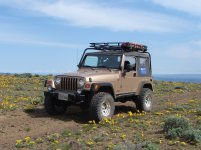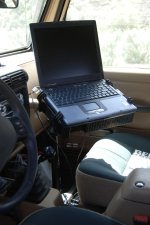spatialminds
New member
The admin encouraged me to start a new thread describing Overland Navigator and for discussion.
Overland Navigator essentially turns your computer into a GPS with a really big screen and USGS Topo maps. It works with traditional laptops, small/cheap "netbook" computers, tablets, and UMPCs. It is touchscreen compatible but works equally well with a mouse and keyboard. It is designed to be super easy to install/setup, intuitive to use on the trail, and easy to share tracks/trails with friends.
Detailed information about the product, screenshots, a Youtube demo, and price can be found at Spatial Minds, LLC. Please let me know if you have any questions or suggestions for improvements.
Link to the
Screenshots



My Setup - Semi ruggedized sunlight visible UMPC running Windows XP. Attached to dash with a RAM mount. I'm using a through hull weatherproof SIRF III GPS.
I like the UMPC because I can remove it and store it in my locking drawers when I'm hiking, snowshoeing, etc. My truck is a Land Rover. I'll post additional pictures of Jeep installs soon. The Tuftab in my Land Rover would also work in a Jeep




Overland Navigator essentially turns your computer into a GPS with a really big screen and USGS Topo maps. It works with traditional laptops, small/cheap "netbook" computers, tablets, and UMPCs. It is touchscreen compatible but works equally well with a mouse and keyboard. It is designed to be super easy to install/setup, intuitive to use on the trail, and easy to share tracks/trails with friends.
Detailed information about the product, screenshots, a Youtube demo, and price can be found at Spatial Minds, LLC. Please let me know if you have any questions or suggestions for improvements.
Link to the
Screenshots



My Setup - Semi ruggedized sunlight visible UMPC running Windows XP. Attached to dash with a RAM mount. I'm using a through hull weatherproof SIRF III GPS.
I like the UMPC because I can remove it and store it in my locking drawers when I'm hiking, snowshoeing, etc. My truck is a Land Rover. I'll post additional pictures of Jeep installs soon. The Tuftab in my Land Rover would also work in a Jeep




Last edited:



